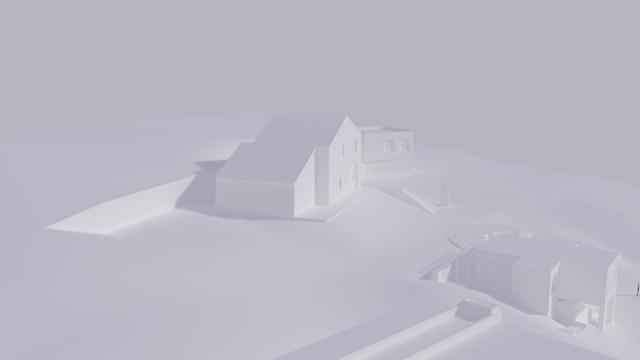
FOREWORD
ARMAN, THE ETERNAL FÉMININE.
The feminine figure and the use of bronze by Arman.
At the BIDONVILLE:
ARMAN’s family house and his place to work when he is in France.
" - France is my cultural basis"
When he discovers New York in the sixties, he falls immediately in love with the city.
But he always keeps the need to come back and re-energize from his origins.
Born in Nice in 1928, where he grows up, his parents by for their old age a piece of land on the heights of Vence where they built their house.
When Arman splits from Eliane, his first wife, he invests in the place.
In the late sixties, he also builds a house to allow the whole family (3 children) to be together.
And a studio to work.
The vocation of the Bidonville has always been, until the end in his mind, the place in France for a Foundation to provide the environment to perpetuate his work.
SO BE IT
A polemic exists; two subjects are stuck to the image and work of Arman;
- The question of the multiples, especially with respect to his work with bronze
- His relationship to women and his reputation: and this is about multiples again!
Little reference exists on either subject to think about the issue.
It is time to place a few foundations for reflection. And thus open a research path to perpetuate, refine, and clarify the work as much as the personality of the artist.
Where the gesture is the place to reveal him.
ACCUMULATE
Going through the question is best done as a walk across the Bidonville.
Every detail of the place allows us to decline a facet concerning the work and the man.
It all combines to reveal Arman.
The possibility to go along via the digital tool enables a journey going from a surface walk to the depth. The requirement for scientific rigor can thus be satisfied without preventing the more direct access talking about Arman.
He knew how to think up his work, his way of doing things.
He also knew how to talk about it, to explain it
With the Bidonville, he also allows us to see him.
Images to unwind time illustrate a rhythm to link the geography of the place to Arman’s history. The halts in the silence of the works selected amongst the feminine statuary should offer some keys.
This will be the case on the subject of his ways to create as well as for understanding his art of knowing how to do.
Furthermore, this step-by-step journey will detail the period of his work so criticized and misunderstood. So as to reveal the full importance, essential to acknowledge when considering and archiving the entirety of his work.
The years covered here are in the 1985-1995 decade, they represent the period when he explored the work on the bronze.
If the journey across his house should embody the character, the halts on the images will be the exploration. The links to click onto focus the acuity of the bounds that have nourished his way of doing. This is true as much as regarding his practice of some preliminary drawing, as well as concerning his comments, just as rituals while working in his studio sometimes leading him to this final touch, always significant in his work: give a title.
Arman always remained consistent with his early gestures. Some biased opinions in the art world have condemned him too early, too young. No, he would not have done better to die in 1970 and it will be worth following him up till 2005 ...
This unwinding of images aims at providing a temporality between the walk across his home and the role of the halts. One that seeks to provide the best conditions to let the observer make his own way at will. Pieces of information can be selected at choice to suit each visitor’s desire to learn more.
- Either visual information (archive’s photos and films)
- Or sound information (pieces of explanations, musics, sounds)
- Or written text
To fulfil this goal:
“ – GIVE TO SEE IN ORDER TO GIVE TO UNDERSTAND”.
It was his phrase.
The research conducted here on the theme of the feminine figure as well as on the use of bronze will highlight how he always remained in line with himself. Be it about the masterpiece of which he liked to say that the nobility title stemmed from the fact it was read and recognized by the greatest number, or about the decried multiple that is perhaps honored in the home of the one who loves Arman and is reading this, for both a consideration must be readjusted.
In either case, Arman and his approach if he signed it, is fully present.
There is nothing to throw away. Let’s take a close look in his secret of things, these objects transformed to offer us ... the world.
He always remained literal when he meant to say something.
So this supposes a prior and compulsory requirement:
there must be someone who gives to see.
But also the other one who watches.
The ARMAN museum wants to be faithful.
To give to see.
And so that the observer discovers the appetite to try to understand.